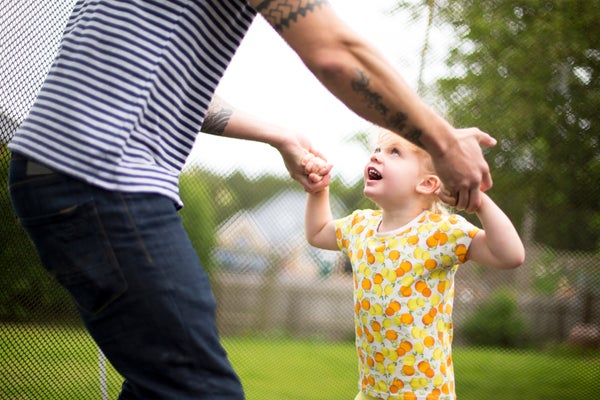This article was published in Scientific American’s former blog network and reflects the views of the author, not necessarily those of Scientific American
I remember when the start of spring meant longing stares out of school windows and students begging to hold class outside. In college, my peers would bargain with their professors to hold discussions on the quad, sitting in the grass and pretending it’s warm enough not to need a jacket. Even my son, who is still too young to speak, will push the car door back open and bask – face up to the falling snow – to linger just a few moments longer before getting buckled in. It is a far cry from my current colleagues who use even the threat of rain as reason enough not to go for a walk at lunch. It is even more distant from the parenting advice columns that now flood my inbox about ways to entice reluctant kids to let go of their electronics and go outside. Why has going outside changed from something that was worth any effort to too much of an effort in itself?
According to a series of surveys conducted by The Nature of Americans, finding an answer to that question may start with asking another: Where can you go to experience nature? According to one survey, kids often saw nature as just outside the door. Back yards, small creeks, gardens, and nearby woods all presented the opportunity to be in nature. And even though those kids preferred trees or woods to neat grass, those manicured lawns were still a perfect place to make memories. Adults, on the other hand, had visions of nature that would feel at home on the cover of a travel magazine. In search of “authentic” or “pure” nature experiences not only cut out the back yard, but even the neighborhood park in favor of faraway lands and once-in-a-lifetime experiences. While 82% of surveyed adults saw a national park as nature, only 52% felt the same way about local parks. Of course experiencing nature seems like an effort if you have to travel hours to do so.
The Nature of Americans identifies another misconception that fits right in with those Instagram-worthy shots of a hiker standing on a mountaintop and staring over an untouched valley: that nature is something you experience alone. When asked about their best memories in nature, adults are more likely to describe experiences that happened with others. But ask those same adults about the idea of nature being a social setting, and they will respond that being alone is more “authentic.” Considering nature experiences as solitary ones has an alarming effect when combined with the added perception that it is unsafe to be outside. When surveyed, almost a third of white adults and more than half of non-white adults responded with “the outdoors is unsafe” as one of the reasons hindering their interest in nature. An outdoors that is far away, unsafe, and meant to be experienced alone certainly sounds less appealing than one that is safe, just outside your door, and meant to be experienced with friends.
On supporting science journalism
If you're enjoying this article, consider supporting our award-winning journalism by subscribing. By purchasing a subscription you are helping to ensure the future of impactful stories about the discoveries and ideas shaping our world today.
Even with all of these perceptions about the relative safety or accessibility of the outdoors, both adults and children have strong beliefs about the benefits associated with spending time outside. A survey of 771 kids between the ages of 8-12 were asked the question, “How much do you think playing in the outdoors and nature has helped you in each of these parts of growing up?” More than 90 percent of kids felt that time in nature had helped them with “becoming happy when sad,” with most of them responding that it helped a lot. Eighty-five percent thought it helped with “learning at school” and 96 percent thought it helped with “thinking of new ideas to try out.” No wonder kids were begging to have class outside. Adults were asked, “How important is getting into nature for your emotional outlook?” Across race and ethnicity, 66-83 percent identified getting into nature as highly important. More than 70 percent felt that getting into nature was very or extremely important to their physical health.
A wide range of organizations are trying to encourage the broader public to prioritize time outdoors, but these surveys provide at least a few small ways to initiate that change at home. Rather than asking yourself if the river path past the parking garage is really nature, ask yourself whether you would like to “become happy when sad” or “think of new ideas to try out.” We can remind ourselves that being in nature doesn’t always have to be a grand experience. We can channel our elementary-school selves and beg, “I know it’s not that warm yet, but pleaaaase! You can still have your morning coffee break and chat with Janice, but can’t you just do it out by the trees outside? Please??” Maybe if we can remind ourselves that nature is easy to reach, it will be easier to convince reluctant kids to join us. After all, nature is just outside the door.
